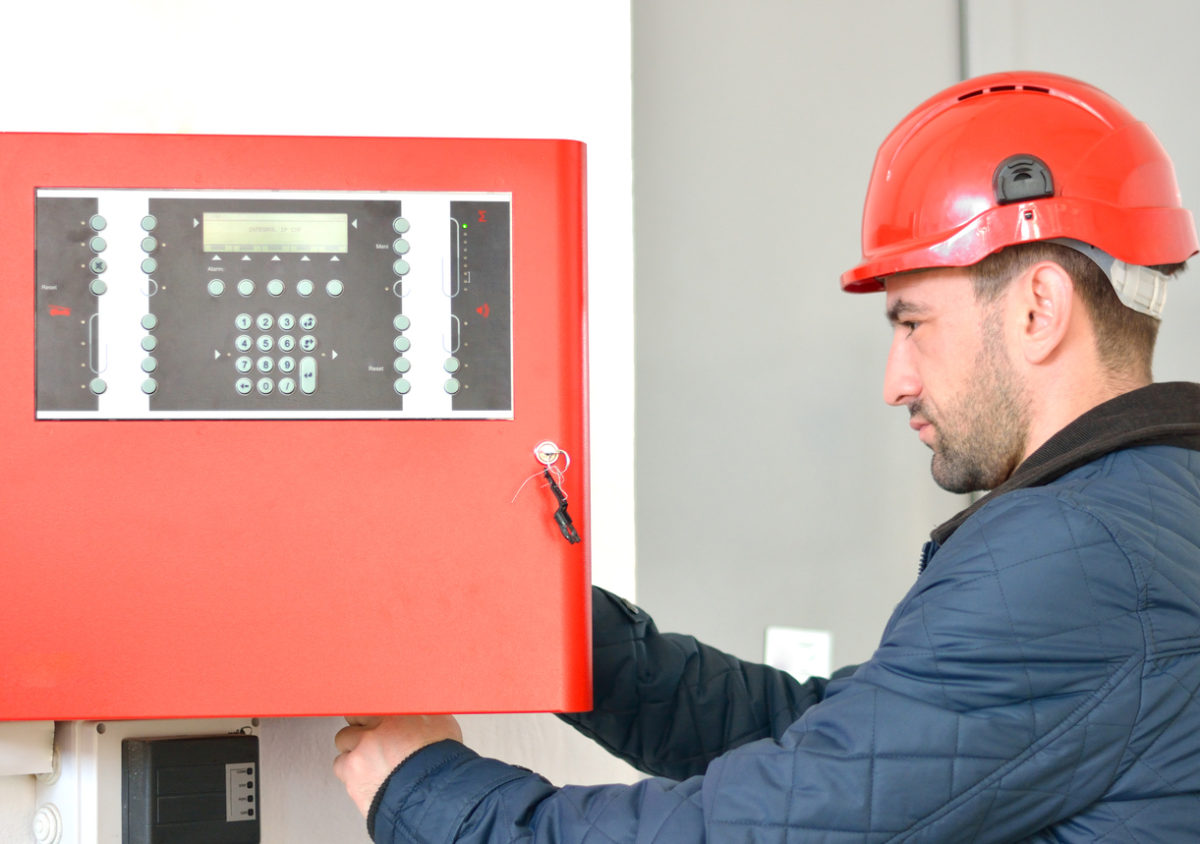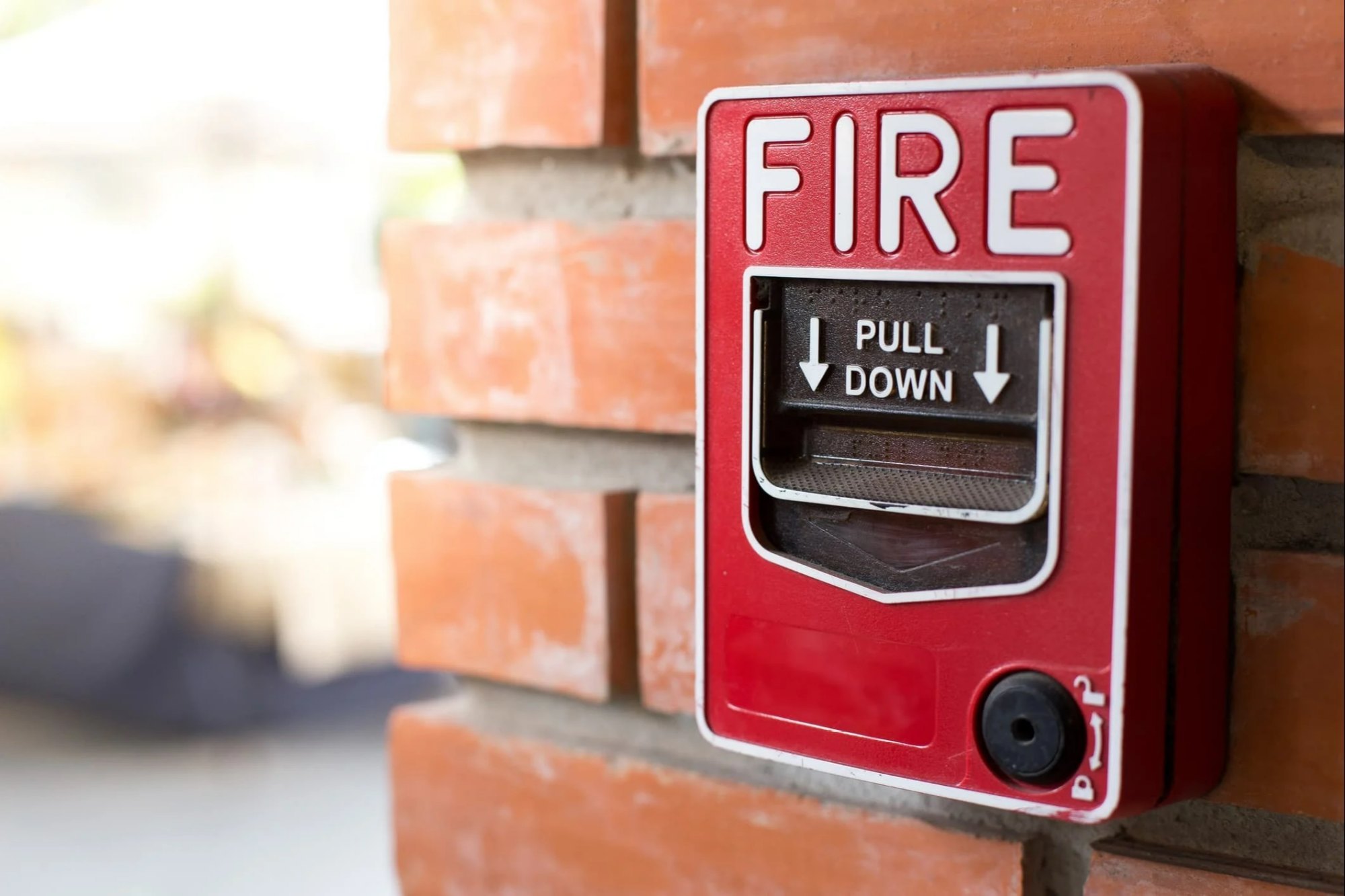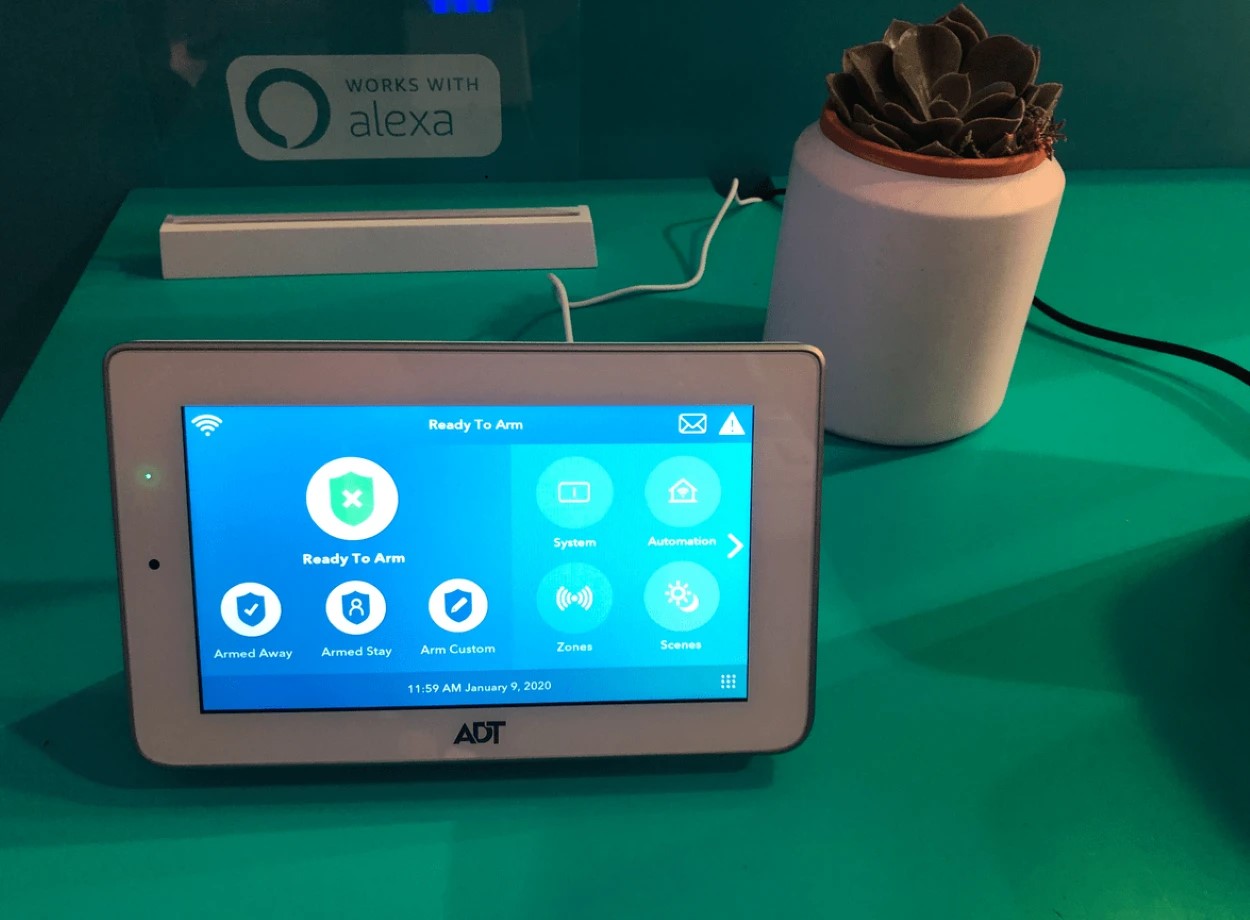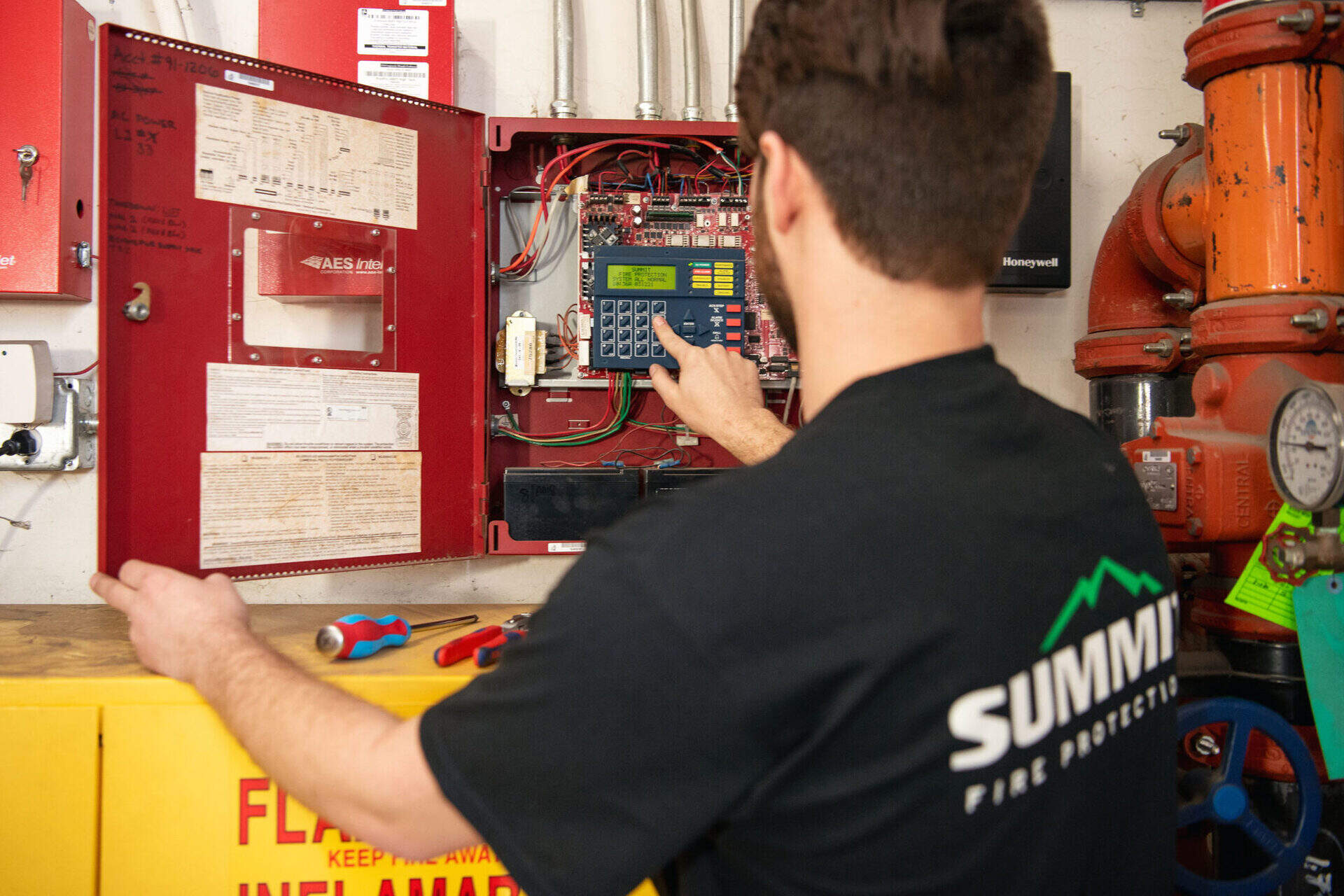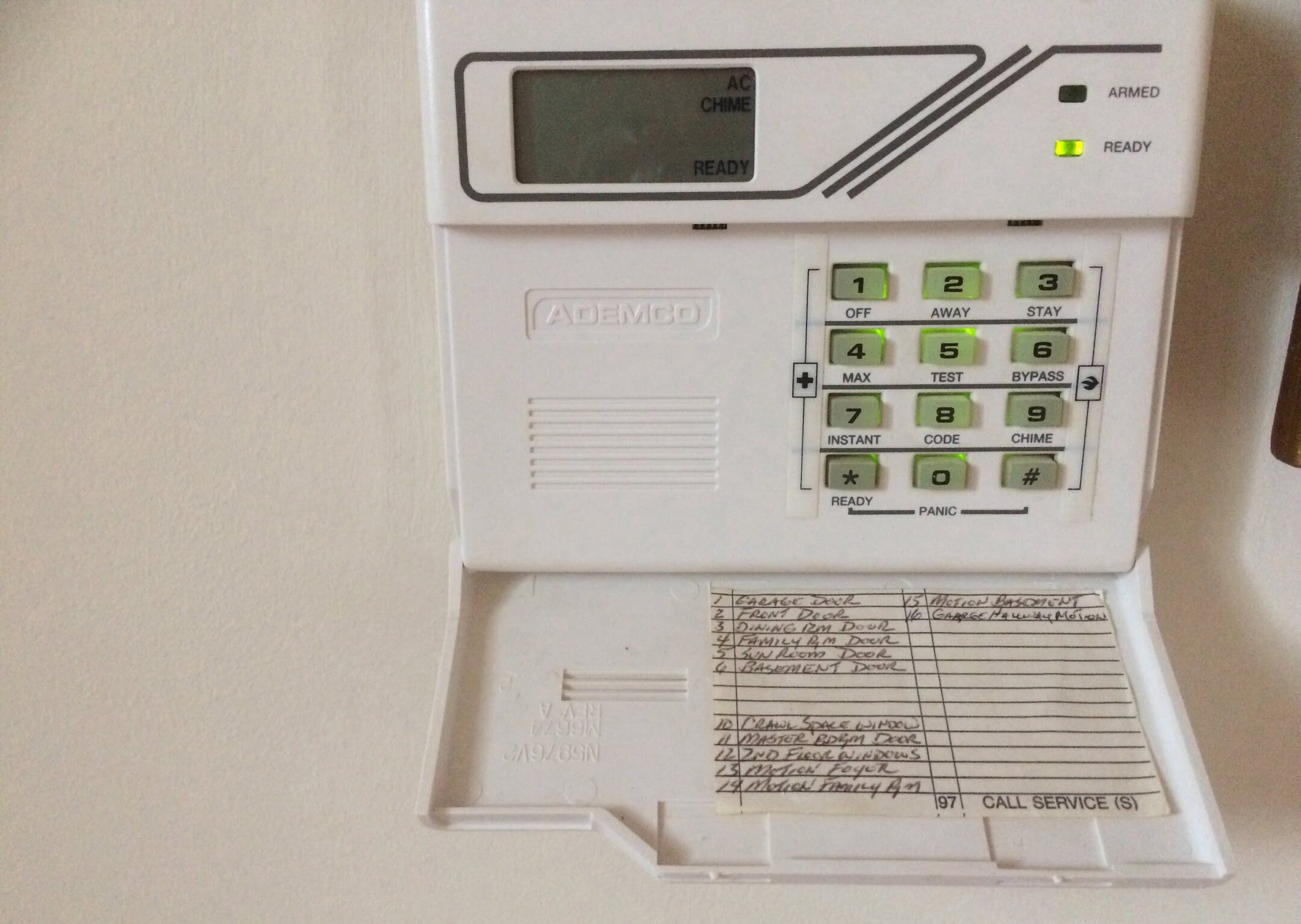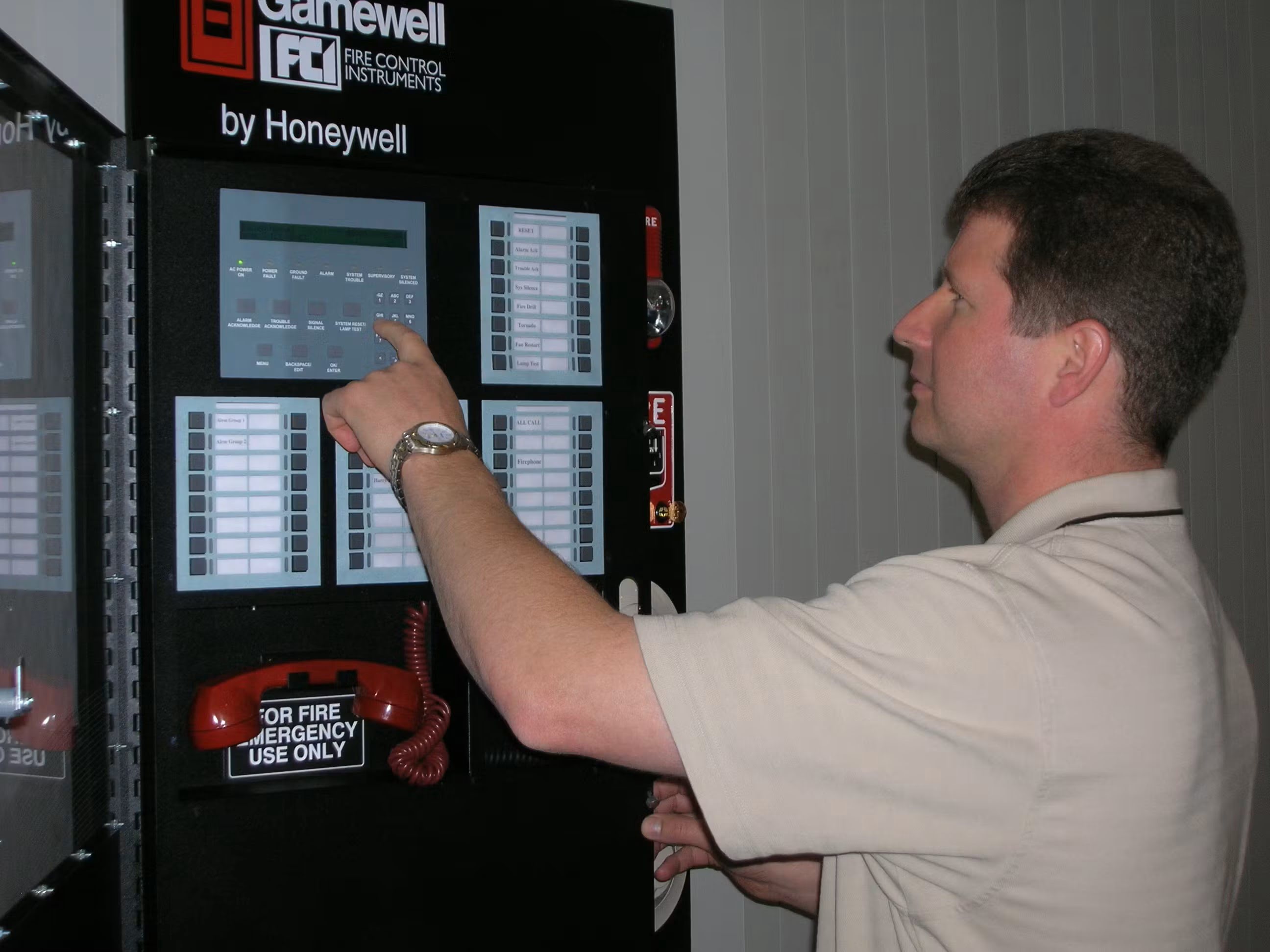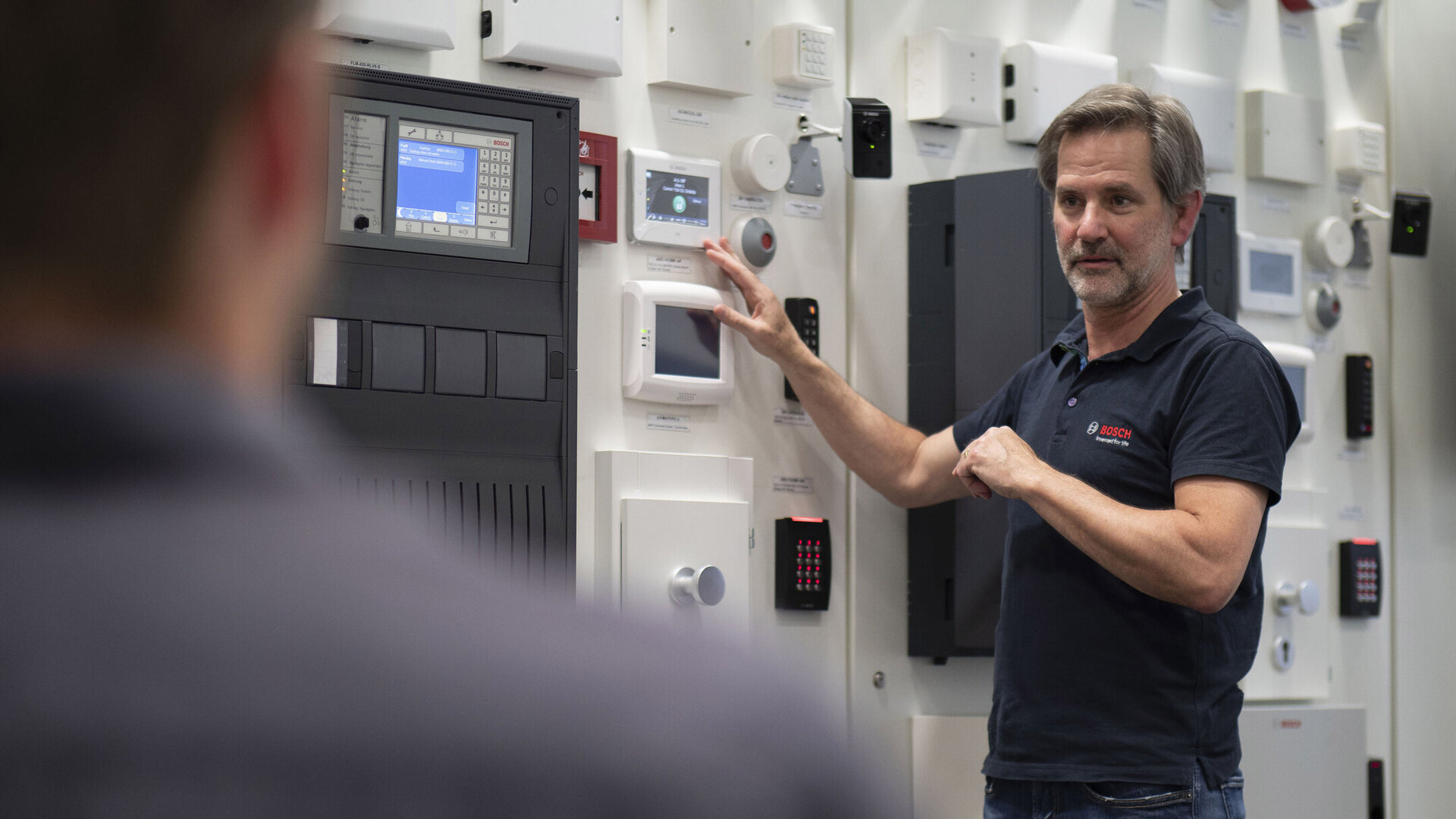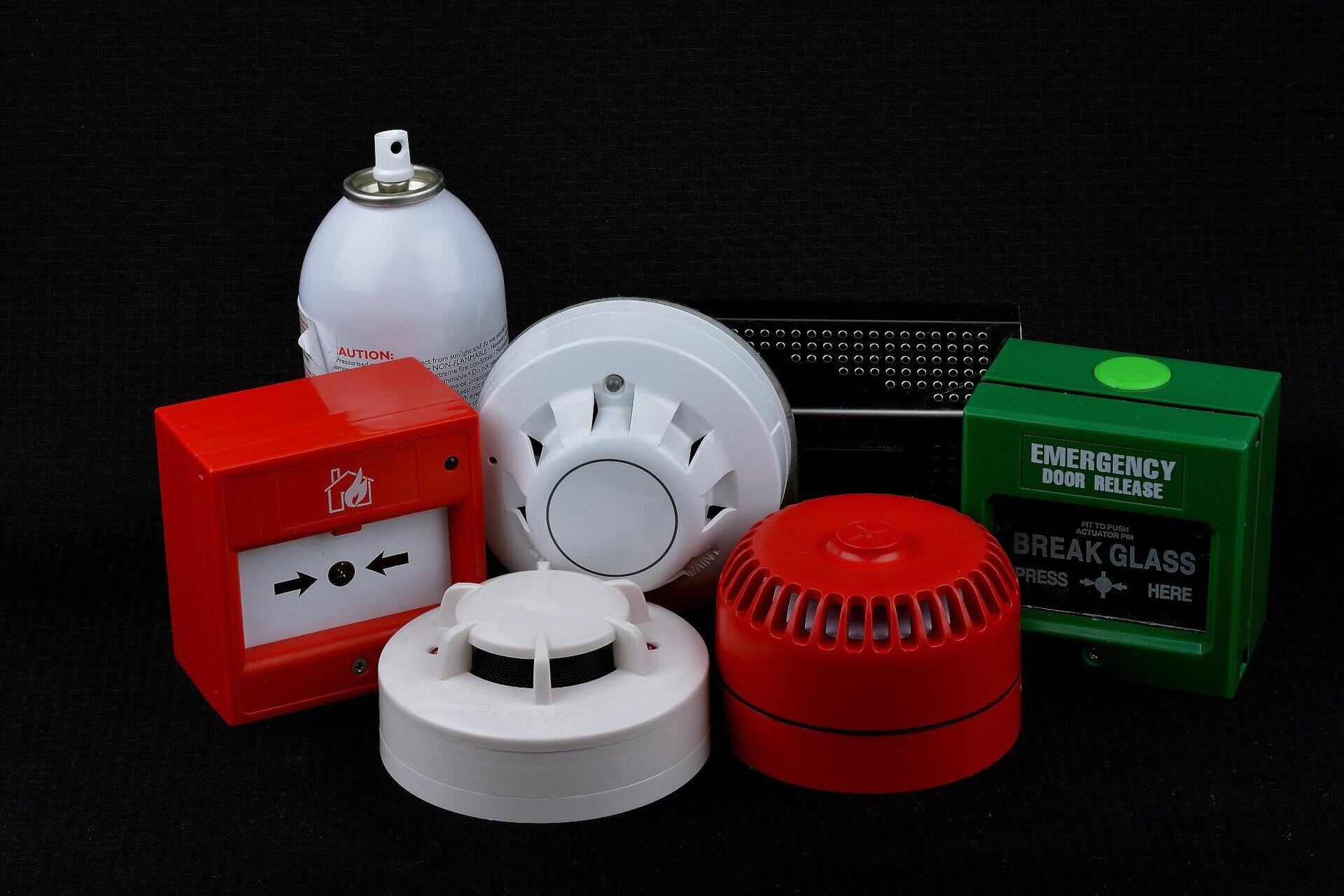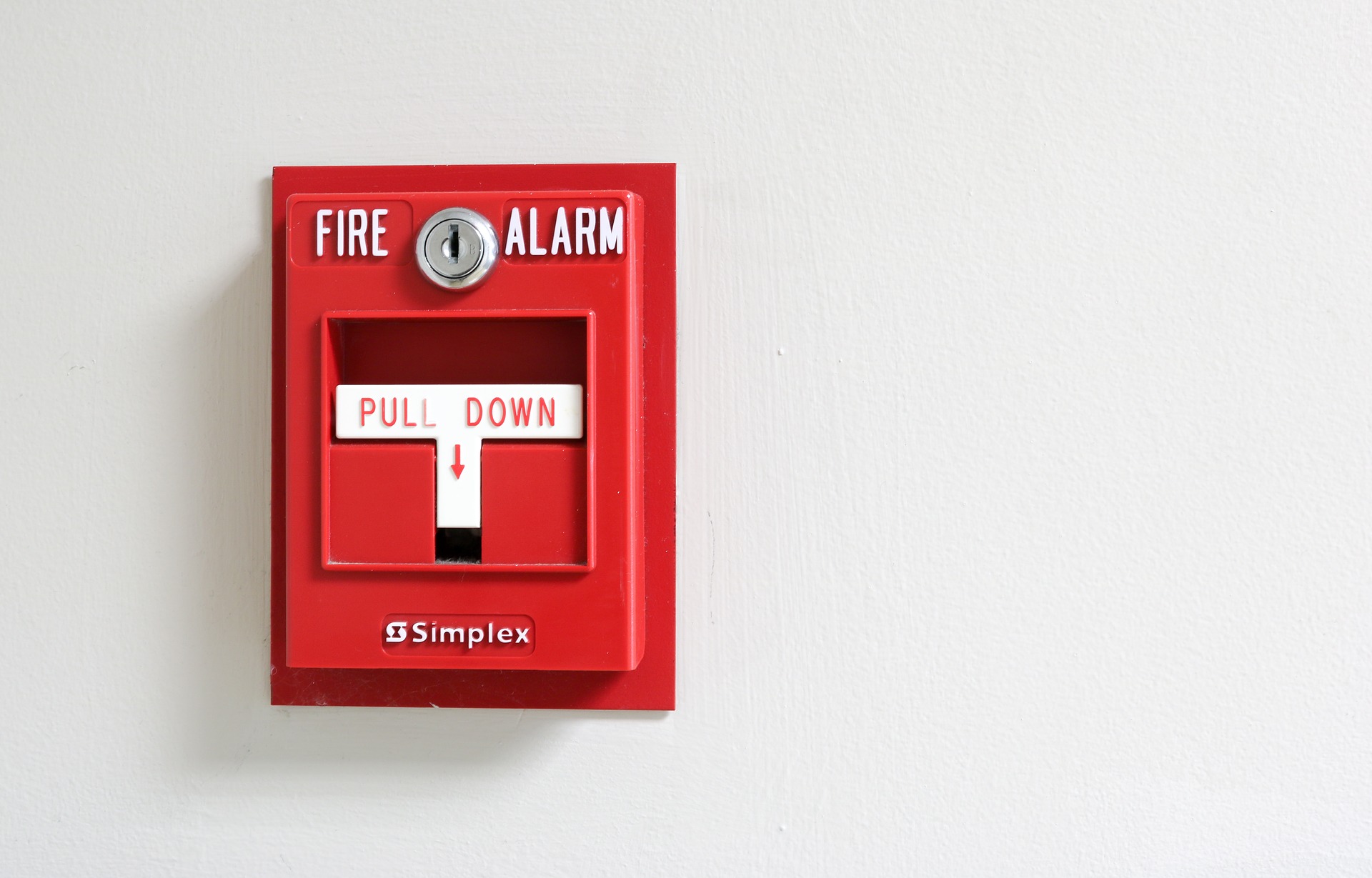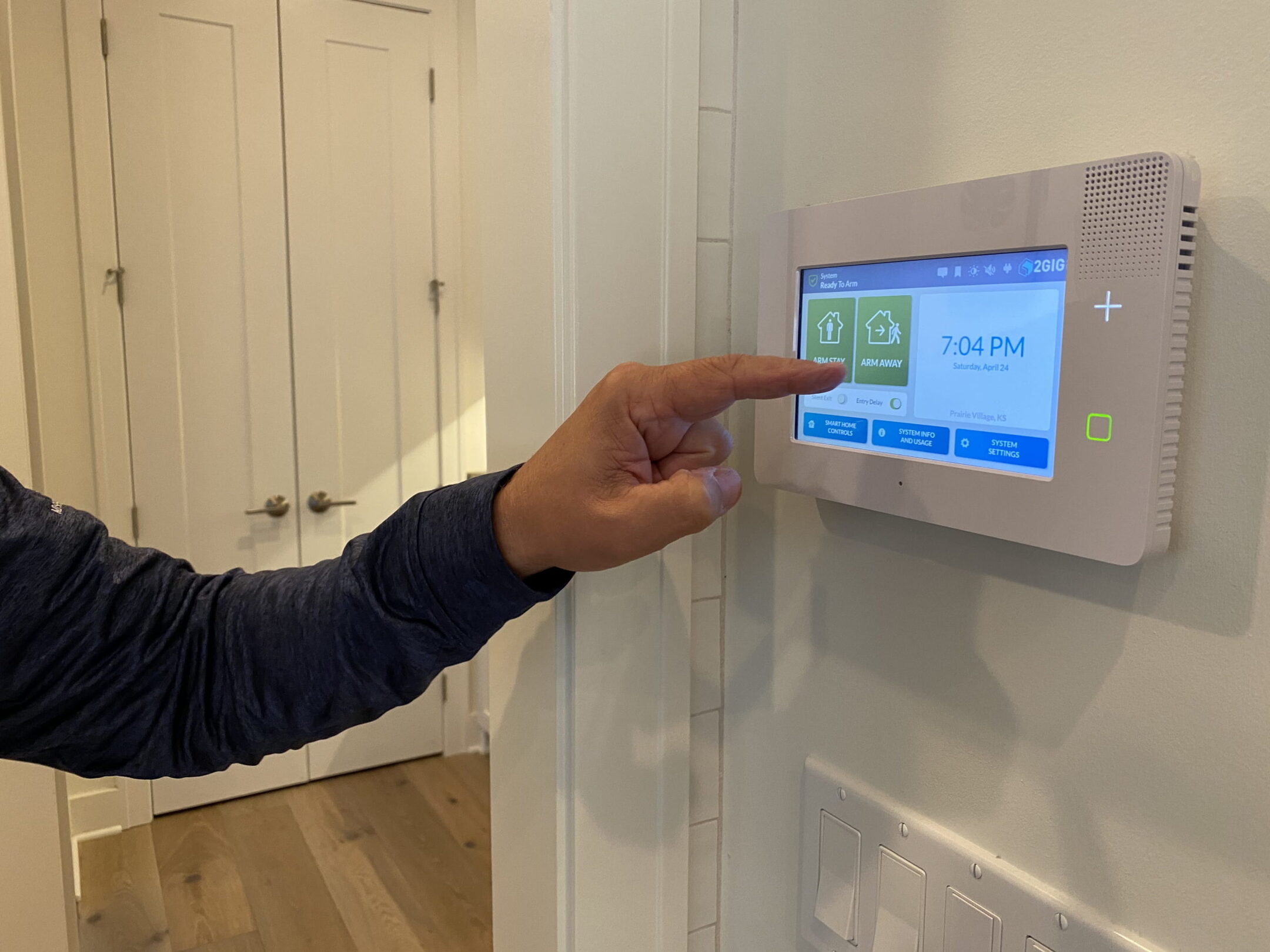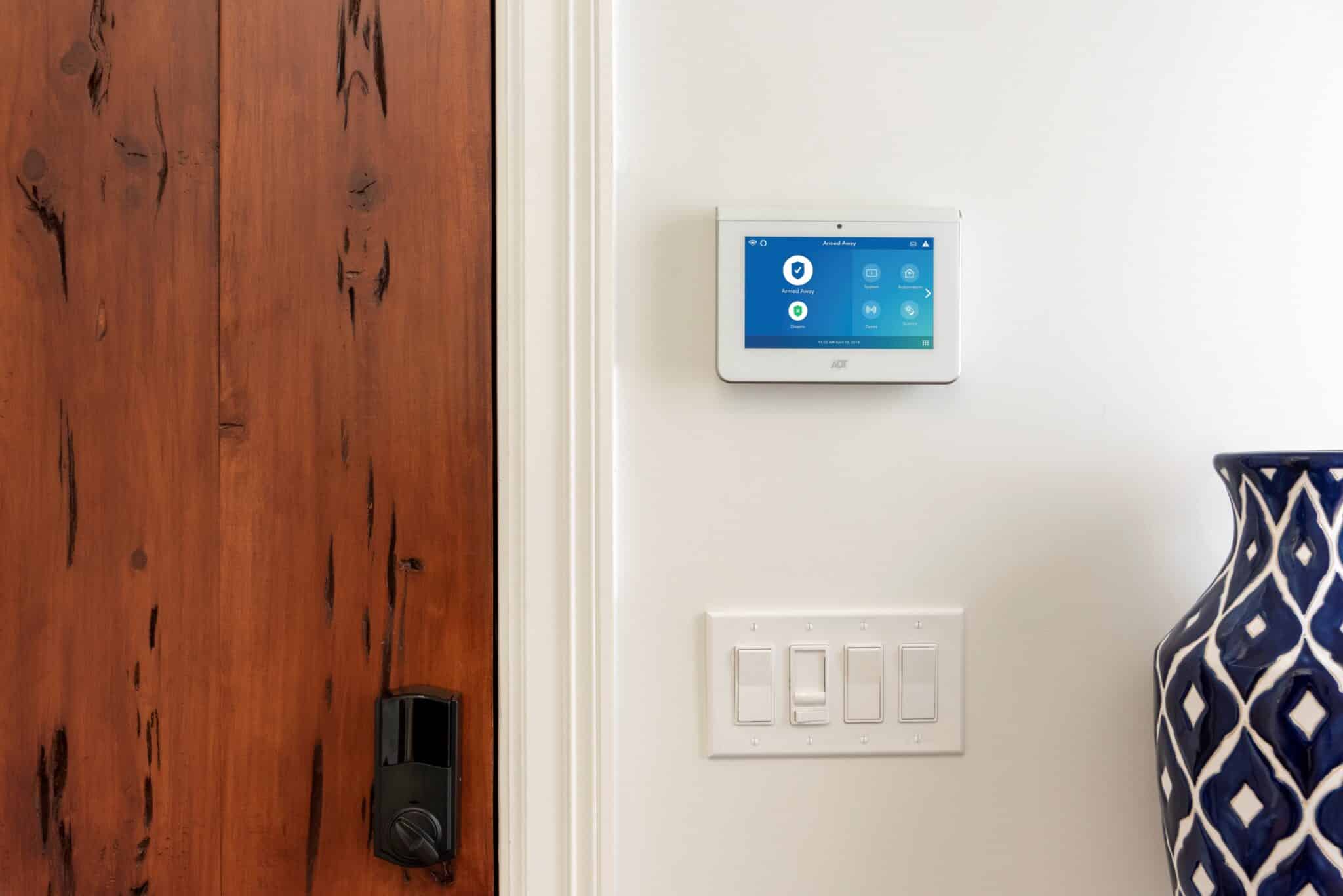Home>Home Security and Surveillance>Who Designs Fire Alarm Systems
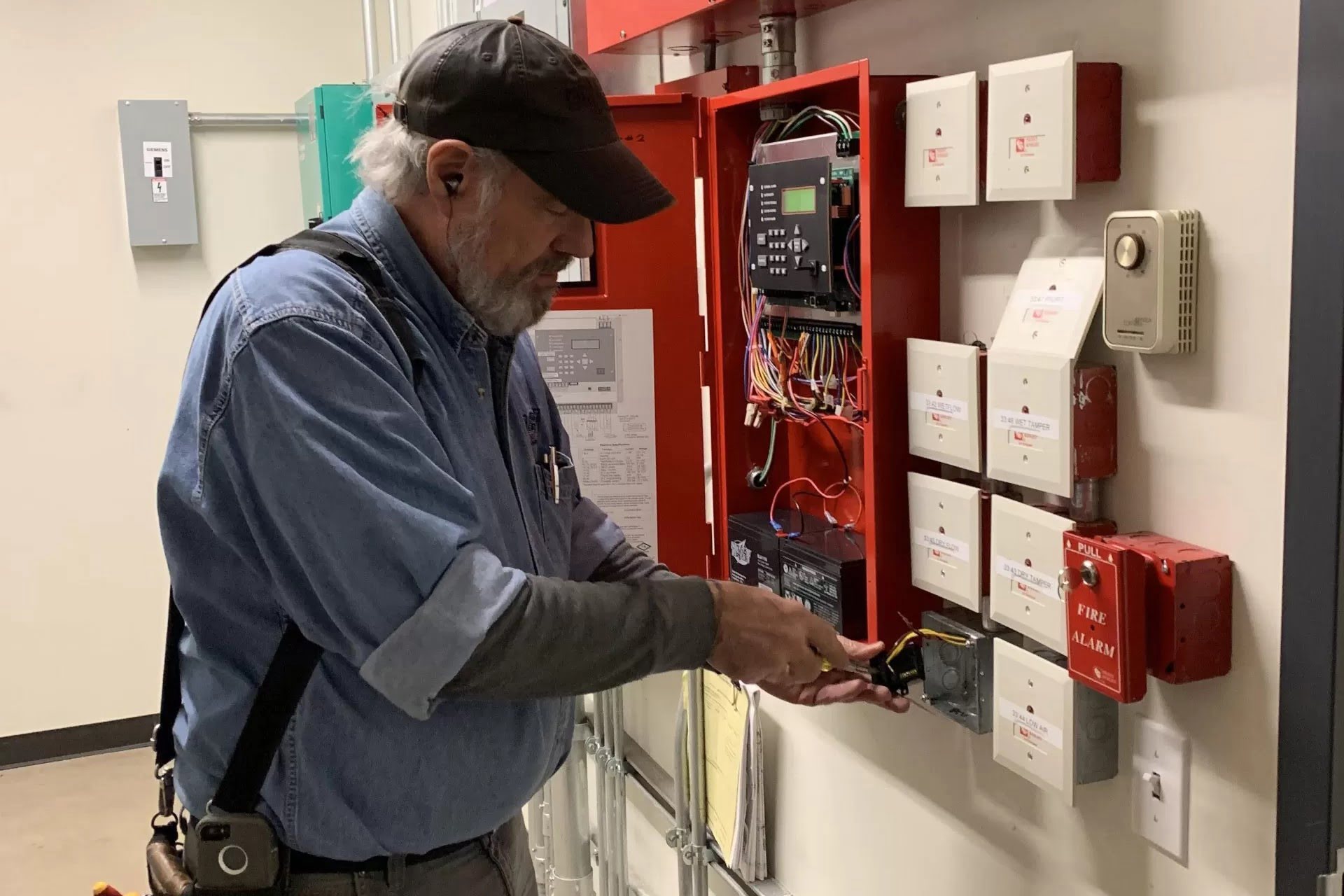

Home Security and Surveillance
Who Designs Fire Alarm Systems
Modified: March 6, 2024
Looking for home security and surveillance? Find out who designs fire alarm systems and protects your home with top-notch technology.
(Many of the links in this article redirect to a specific reviewed product. Your purchase of these products through affiliate links helps to generate commission for Storables.com, at no extra cost. Learn more)
Introduction
When it comes to safeguarding our homes, families, and valuable possessions, home security and surveillance systems play a crucial role. These systems provide us with peace of mind, ensuring that our homes are protected from intruders and potential threats. One vital component of a comprehensive home security system is fire alarm systems. These systems not only detect the presence of fire but also alert occupants, providing them with the necessary time to evacuate safely.
While we often think about the different components that make up a fire alarm system, such as smoke detectors, heat sensors, and control panels, we may not always consider the individuals responsible for designing these systems. Fire alarm system designers are the unsung heroes behind the scenes, ensuring that these vital safety systems are properly designed and implemented.
In this article, we will take a closer look at the role of fire alarm system designers, their qualifications and skills, their understanding of fire safety codes and building layouts, the design process they follow, and their collaboration with architects and engineers. We will also explore how they integrate fire alarm systems with other building systems and the considerations they must take into account for specialized environments.
Whether you are interested in pursuing a career in fire alarm system design or simply want to better understand the importance of these professionals in ensuring the safety of your home or building, this article will provide you with valuable insights.
So, let’s dive in and explore the world of fire alarm system designers and the vital role they play in keeping us safe.
Key Takeaways:
- Fire alarm system designers are unsung heroes who ensure that buildings are equipped with effective fire safety systems. Their expertise and collaboration with architects and engineers play a crucial role in protecting lives and property.
- To become a fire alarm system designer, individuals need a combination of education, training, and professional certifications. Their role involves understanding building layouts, integrating systems, and addressing unique challenges in specialized environments.
Read more: When Are Fire Alarm Systems Required
Role of Fire Alarm System Designers
Fire alarm system designers play a critical role in the development and implementation of fire safety measures. They are responsible for designing and configuring fire alarm systems that meet the specific needs and requirements of a building or facility. These professionals work closely with architects, engineers, and building owners to ensure that the fire alarm system is integrated seamlessly into the overall building design.
One of the primary responsibilities of fire alarm system designers is to assess the fire risks and hazards associated with a particular building or occupancy type. They conduct thorough analyses of the building’s layout, occupancy type, and potential fire scenarios to determine the most effective placement of fire alarm components such as smoke detectors, heat sensors, and manual pull stations. This requires a deep understanding of fire safety codes and standards to ensure compliance with regulations.
Fire alarm system designers also collaborate with other professionals, such as architects and engineers, throughout the design process. They work closely with architects to ensure that the fire alarm system’s components are seamlessly integrated into the building’s design, without compromising aesthetic appeal. Additionally, they coordinate with engineers to ensure that the system’s electrical and technical requirements are met.
One of the key aspects of a fire alarm system designer’s role is to select the appropriate equipment and devices for the specific requirements of a building. They consider factors such as the size of the building, the number of occupants, and the potential fire hazards present. This involves researching and staying up-to-date with the latest advancements in fire alarm technology and understanding how different types of devices function in different scenarios.
Fire alarm system designers are also responsible for developing the system’s layout and wiring diagrams. These documents provide a detailed guide for the installation technicians, ensuring that the system is installed correctly and operates efficiently. They also work closely with the installation team to ensure that all components are properly connected and tested according to industry standards.
In addition to the design and installation phase, fire alarm system designers may also be involved in conducting periodic system inspections and maintenance. This includes testing all devices, verifying system functionality, and making any necessary updates or repairs.
Overall, fire alarm system designers play a crucial role in ensuring the safety and protection of buildings and their occupants. Their expertise and attention to detail are essential for designing effective fire alarm systems that can detect and alert occupants in the event of a fire, minimizing the risk of loss of life and property damage.
Qualifications and Skills
Fire alarm system designers require a combination of qualifications and skills to excel in their role. While specific requirements may vary depending on the jurisdiction and employer, there are some common qualifications and skills that are typically sought after in this profession.
First and foremost, a strong foundational knowledge of fire safety codes and standards is essential. Fire alarm system designers must have a thorough understanding of local, state, and national codes and regulations related to fire safety. This includes knowledge of the National Fire Protection Association (NFPA) standards, such as NFPA 72 – National Fire Alarm and Signaling Code, as well as any specific codes applicable to their region.
In addition to code knowledge, fire alarm system designers must have a comprehensive understanding of building construction and occupancy types. This includes familiarity with different building materials, structural systems, and fire resistance ratings. Understanding how these factors impact fire spread and evacuation routes is vital in designing effective fire alarm systems.
Technical skills are also critical for fire alarm system designers. They must be proficient in using computer-aided design (CAD) software to create detailed system layouts and wiring diagrams. Knowledge of electrical systems and circuitry is important for designing and specifying the necessary wiring infrastructure for the fire alarm system.
Communication and collaboration skills are also important for fire alarm system designers. They need to effectively communicate with architects, engineers, and building owners to understand their requirements and ensure that the fire alarm system meets their needs. Strong interpersonal skills are necessary for building positive working relationships and coordinating with installation teams.
An eye for detail and strong problem-solving skills are important qualities for fire alarm system designers. They must be able to analyze complex building layouts and fire scenarios to identify potential risks and design appropriate solutions. Attention to detail is crucial to ensure that all components and devices are accurately specified and positioned for effective detection and response.
Fire alarm system designers should also stay abreast of technological advancements in the industry. They should continually update their knowledge of the latest fire alarm equipment and devices, such as advanced detectors, integrated communication systems, and advanced notification appliances. This allows them to design state-of-the-art systems that leverage the latest technology to enhance fire safety.
Lastly, professional certifications can provide additional credibility and expertise for fire alarm system designers. Certifications such as the Certified Fire Protection Specialist (CFPS) or Certified Fire Alarm Technician (CFAT) demonstrate a commitment to professional development and adherence to industry standards.
In summary, fire alarm system designers require a combination of technical knowledge, problem-solving abilities, communication skills, and a commitment to stay updated with industry standards and regulations. These qualifications and skills are essential in designing effective and compliant fire alarm systems that protect lives and property.
Knowledge of Fire Safety Codes and Standards
Fire alarm system designers must possess a deep understanding of fire safety codes and standards to effectively design and implement fire alarm systems. These codes and standards serve as guidelines to ensure the safety of occupants and minimize the risk of fire-related incidents. Knowledge and adherence to these regulations are essential for fire alarm system designers to create systems that are compliant, reliable, and effective.
One of the most widely recognized codes in the field of fire alarm system design is the National Fire Protection Association (NFPA) 72 – National Fire Alarm and Signaling Code. This code provides comprehensive guidance on the installation, testing, maintenance, and design of fire alarm systems. Fire alarm system designers must be familiar with the requirements and recommendations outlined in NFPA 72 to ensure compliance with industry standards.
In addition to NFPA 72, fire alarm system designers must also be acquainted with other relevant codes and standards. These may include local, state, and national building codes, electrical codes, and fire prevention codes. Examples of these codes and standards include the International Building Code (IBC), International Fire Code (IFC), and the National Electrical Code (NEC).
Fire alarm system designers must stay updated with any amendments, revisions, or new editions of these codes and standards. Regularly reviewing changes ensures that their designs incorporate the latest requirements and best practices. This can include staying informed about updates related to control panel placement, device spacing, signal intensity requirements, and voice evacuation system design.
Fire safety codes and standards encompass various aspects of fire alarm system design, including the installation and positioning of devices, the spacing between detectors, and the audibility of alarm signals. Designers must understand the specific requirements for different types of building occupancies, such as residential, commercial, and industrial properties.
Another crucial aspect of fire safety codes and standards is the documentation and record-keeping requirements. Fire alarm system designers must ensure that their designs and plans adhere to the guidelines for record-keeping and reporting outlined in the relevant codes. This includes providing accurate and detailed documentation of the system layout, wiring diagrams, manufacturer data sheets, and any deviations from the standard installation practices.
Fire alarm system designers must also consider codes and standards related to emergency communication systems (ECS) and mass notification systems (MNS). These systems are designed to provide additional safety measures in emergencies, such as providing instructions during an evacuation or communicating critical information to building occupants.
In summary, fire alarm system designers must possess a comprehensive knowledge of fire safety codes and standards, including NFPA 72 and other relevant local, state, and national codes. This knowledge ensures that their designs meet the required standards, comply with regulations, and promote the safety of building occupants in the event of a fire emergency.
Understanding Building Layouts and Occupancy Types
When designing fire alarm systems, one of the key considerations for fire alarm system designers is a thorough understanding of building layouts and occupancy types. This knowledge allows designers to tailor their designs to the specific needs and requirements of different buildings, ensuring the optimal placement of fire alarm components and an effective response in case of a fire.
Building layouts vary widely, ranging from single-family homes to high-rise buildings, and each type requires careful consideration in terms of fire protection. Fire alarm system designers must be able to analyze and interpret architectural drawings and floor plans to identify potential risks and develop strategies to mitigate them.
For example, designers must assess the ingress and egress routes within a building. They need to consider potential obstructions, such as walls, partitions, or low ceilings that may impede the placement and effectiveness of fire alarm devices. Additionally, they must identify areas that require special attention, such as stairwells, elevators, and common areas, where early detection and notification are critical for evacuation.
Understanding building occupancy types is equally important. Different occupancies have unique characteristics and requirements when it comes to fire alarm system design. Occupancies can be broadly categorized into residential, commercial, industrial, healthcare, educational, and assembly spaces.
Residential buildings, such as single-family homes, apartments, or condominiums, typically require fire alarm systems that protect the sleeping areas and provide early detection to ensure the safe evacuation of residents. In commercial buildings, fire alarm systems need to consider factors such as the type of business conducted, the number of occupants, and the layout of the space. Industrial buildings may have specific fire hazards that need to be addressed, such as flammable materials or processes.
In healthcare facilities, fire alarm systems must be designed to accommodate the needs of patients, staff, and visitors. This may involve integrating fire alarm systems with other life safety systems, such as nurse call systems or patient annunciators. Educational facilities, including schools and universities, require fire alarm systems that are designed to address the unique challenges of crowded spaces and the rapid evacuation of students and staff.
Assembly spaces, such as theaters, stadiums, or convention centers, require special attention due to their large occupant loads and complex layouts. Fire alarm system designers must carefully plan the placement of devices and ensure that alarm signals are clear and audible throughout the space.
Overall, understanding building layouts and occupancy types is crucial for fire alarm system designers. This knowledge allows them to assess the specific risks and requirements of each building and develop customized designs that provide maximum protection in the event of a fire. By considering the unique characteristics of a building and its occupancy, designers can ensure that fire alarm systems are strategically positioned to detect and alert occupants, facilitating a safe and timely evacuation.
Read more: How To Troubleshoot Fire Alarm Systems
Fire Alarm System Design Process
The design process for fire alarm systems involves a systematic approach to ensure the effective and efficient implementation of these essential safety systems. Fire alarm system designers follow a series of steps to create designs that meet the specific needs and requirements of a building or facility.
1. Gather Information: The first step is to gather relevant information about the building, including its layout, occupancy type, and any specific fire safety requirements and regulations. Designers consult architectural drawings, floor plans, and collaborate with architects, engineers, and building owners to obtain necessary information.
2. Risk Assessment: Next, fire alarm system designers conduct a thorough risk assessment to identify potential fire hazards and risks associated with the building. This involves analyzing the occupancy type, building materials used, potential ignition sources, and the presence of flammable substances. This assessment helps designers determine the appropriate type and placement of fire alarm devices.
3. System Design: Based on the gathered information and risk assessment, fire alarm system designers proceed to develop a comprehensive system design. This involves selecting the appropriate fire alarm components, such as smoke detectors, heat sensors, manual pull stations, and notification devices. They consider factors like the size of the building, the number of occupants, and the specific fire safety codes and standards applicable to the project.
4. Layout and Wiring: Once the system design is finalized, fire alarm system designers create detailed layout and wiring diagrams. These documents specify the exact placement of devices and the wiring connections required. Accuracy and attention to detail are crucial to ensure that the installation team can implement the design correctly.
5. Coordination with Other Building Systems: Fire alarm system designers collaborate with other professionals, such as architects, engineers, and electrical contractors, to ensure seamless integration of the fire alarm system with other building systems. This coordination is vital to ensure the proper functioning of the fire alarm system and avoid conflicts with other building components.
6. Documentation: Fire alarm system designers generate comprehensive documentation that includes the system design, layout diagrams, wiring diagrams, equipment specifications, and any deviations from standard installation practices. These documents serve as a guide for installation technicians and future maintenance or modification efforts.
7. Testing and Commissioning: Once the system is installed, fire alarm system designers oversee the testing and commissioning phase. This involves conducting comprehensive tests to ensure that all components are functioning properly, that alarm signals are clear, and that the system meets the required standards and regulations.
8. Ongoing Maintenance and Inspections: Fire alarm system designers may also be involved in conducting regular inspections and maintenance of the fire alarm system. This includes routine testing of devices, verifying system functionality, and making any necessary updates or repairs.
The fire alarm system design process is a meticulous and iterative one, requiring attention to detail, compliance with codes and standards, and effective coordination with various stakeholders. By following this process, fire alarm system designers can create designs that ensure the safety and protection of occupants and property in the event of a fire emergency.
Fire alarm systems are typically designed by professional engineers or certified fire protection specialists. They consider building codes, occupancy type, and specific fire hazards to create a system that will effectively detect and alert occupants to a fire.
Collaboration with Architects and Engineers
Collaboration between fire alarm system designers, architects, and engineers is crucial in ensuring the seamless integration of the fire alarm system with the overall building design. This collaborative effort helps maximize the effectiveness and efficiency of the system while addressing the aesthetic and functional aspects of the building.
Architects play a vital role in the design and construction of buildings. They are responsible for the overall layout, structural design, and aesthetic appeal of the structure. Fire alarm system designers collaborate closely with architects to ensure that the fire alarm system is seamlessly integrated into the building’s design without compromising its aesthetics.
During the early stages of the design process, fire alarm system designers consult with architects to understand the building’s layout, structural elements, and any unique design considerations. This collaboration ensures that the fire alarm system components are strategically placed to provide optimal coverage while blending seamlessly with the architectural elements of the building.
Fire alarm system designers and architects work together to determine the most discreet and visually appealing locations for devices such as smoke detectors, notification appliances, and manual pull stations. By incorporating the fire alarm system components into the architectural features, the system becomes unobtrusive while still providing the necessary level of fire protection.
In addition to collaboration with architects, fire alarm system designers also work closely with engineers throughout the design process. Engineers, such as electrical, mechanical, or structural engineers, contribute their expertise to ensure that the fire alarm system is properly integrated into the building’s infrastructure.
Electrical engineers play a crucial role in coordinating with fire alarm system designers to ensure that the electrical requirements and wiring infrastructure align with the design specifications. They work together to determine the appropriate power supply, voltage, and wiring scheme required for the system’s components.
Structural engineers collaborate with fire alarm system designers to identify the most suitable locations for the installation of devices, considering structural elements, such as beams, columns, and load-bearing walls. This collaboration ensures that the integrity of the building’s structure is maintained while providing effective fire alarm coverage.
The collaboration between fire alarm system designers, architects, and engineers extends beyond the design phase. During the construction phase, open communication and coordination are necessary to address any unexpected challenges or modifications that may arise. This ensures that the fire alarm system is installed correctly, in compliance with design specifications and applicable codes and standards.
By working collaboratively, fire alarm system designers, architects, and engineers can create cohesive and integrated fire alarm systems that harmonize with the building’s overall design while providing optimal fire protection and life safety.
Integration of Fire Alarm Systems with Other Building Systems
Fire alarm systems play a critical role in protecting lives and property in the event of a fire. To enhance their effectiveness, fire alarm systems need to be integrated with other building systems. This integration ensures that the fire alarm system operates seamlessly alongside other systems, allowing for efficient and coordinated emergency response.
One of the key areas of integration is with the HVAC (Heating, Ventilation, and Air Conditioning) system. By integrating the fire alarm system with the HVAC system, it is possible to initiate smoke control measures, such as shutting off air supply or activating smoke exhaust fans in the affected areas. This helps contain the spread of smoke and reduces the risk of smoke inhalation, aiding in the safe evacuation of building occupants.
Another important integration point is with the building’s access control and security systems. When a fire alarm is triggered, the integration with access control systems allows for the automatic unlocking of exit doors to facilitate the safe evacuation of occupants. Additionally, integration with security systems enables the simultaneous activation of alarm systems, such as CCTV cameras and intrusion alarms, to alert security personnel and provide visual confirmation of the fire event.
Fire alarm systems can also be integrated with the building’s emergency lighting system. In the event of a fire, the integration ensures that emergency lighting is automatically activated, illuminating exit pathways and aiding in the safe evacuation of occupants, especially in low-light or darkened conditions.
Integration with public address and voice evacuation systems is another critical aspect. By linking the fire alarm system with these systems, it is possible to broadcast audible and clear evacuation messages throughout the building. This helps guide occupants to safety and communicate important instructions during an emergency.
Integrating fire alarm systems with fire suppression systems, such as sprinkler or gas-based suppression systems, is essential for a synchronized response. When the fire alarm system detects a fire, it can signal the activation of the appropriate fire suppression system, aiding in the timely suppression and containment of the fire.
Additionally, integration with building management systems (BMS) allows for centralized monitoring and control of different building systems, including the fire alarm system. By integrating with the BMS, fire alarm system designers can provide real-time monitoring and alerts, allowing maintenance personnel or security personnel to quickly respond to any system faults or alarm conditions.
The integration of fire alarm systems with other building systems requires effective communication protocols and coordination between different system manufacturers. Fire alarm system designers work closely with technicians from other system disciplines to ensure proper integration and compatibility between systems, including the establishment of interconnectivity and successful data exchange.
By integrating fire alarm systems with other building systems, designers can create a comprehensive and interconnected safety ecosystem. This integration not only improves the overall effectiveness of the fire alarm system but also enhances the overall fire safety and emergency response capabilities of the building, creating a safer environment for occupants.
Considerations for Specialized Environments
Fire alarm system designers encounter unique challenges when designing fire alarm systems for specialized environments. These environments have specific requirements and characteristics that must be carefully considered to ensure the safety of occupants and the effectiveness of the fire alarm system. Let’s explore some of the key considerations for specialized environments.
Industrial Facilities: Industrial facilities often have complex processes and materials that can contribute to the risk of fire. Fire alarm system designers must consider the specific hazards associated with the facility, such as the presence of flammable liquids or gases, ignition sources, and the potential for rapid fire spread. The system design should incorporate specialized detectors, such as flame detectors or gas detectors, and provide appropriate alarms and evacuation procedures tailored to the unique hazards of the facility.
Healthcare Environments: Fire alarm systems in healthcare environments, such as hospitals and nursing homes, must address the safety and unique needs of patients, visitors, and medical staff. Designers must consider the mobility limitations of certain patients, the presence of medical equipment, and the importance of minimizing false alarms to avoid disruption to critical patient care. Integration of fire alarm systems with other life safety systems, such as nurse call systems or patient annunciators, is also crucial.
Data Centers: Data centers house critical information and infrastructure, making the protection against fire and early detection essential. Fire alarm system designers in data centers must consider the high value of the equipment, high-density cable arrangements, and the unique heat load characteristics of server racks. They need to incorporate specialized detection methods, such as air sampling smoke detectors, and design systems that minimize the risk of false alarms while providing rapid and reliable detection.
Historic Buildings: Historic buildings often have unique architectural features and materials that require careful consideration during fire alarm system design. Designers must balance the need for fire protection with the preservation of the building’s historic integrity. Integration of fire alarm components must be executed discreetly, preserving aesthetically significant elements and ensuring minimal visual impact.
High-Rise Buildings: Fire alarm systems in high-rise buildings are critical due to the number of occupants and challenges associated with evacuation. Designers must address vertical evacuation routes, staging areas for emergency personnel, phased evacuation strategies, and integration with smoke control systems. Additionally, communication systems, both within the building and with emergency services, should be robust to ensure effective emergency response.
Outdoor Environments: Certain environments, such as outdoor amusement parks or industrial yards, have unique challenges in fire alarm system design. Designers must consider environmental factors, weather exposure, and the need for ruggedized and weather-proof devices. Outdoor environments may require specialized detection methods and alarm notification systems that can withstand outdoor elements.
In each of these specialized environments, fire alarm system designers must conduct thorough risk assessments, collaborate closely with stakeholders, and tailor their designs to address the specific challenges and requirements. By understanding the unique characteristics and potential risks of these environments, designers can create customized fire alarm systems that provide optimal protection and enhanced safety for all occupants.
Read more: How To Connect Fire Alarm Systems
Training and Certification Requirements
To become a fire alarm system designer, individuals typically need a combination of education, training, and professional certifications. These requirements ensure that designers possess the necessary knowledge and skills to design, install, and maintain fire alarm systems in compliance with industry codes and standards.
Educational Background: While there is no specific degree requirement to become a fire alarm system designer, a background in electrical or electronic engineering, fire protection engineering, or a related field is beneficial. A formal education provides a strong foundation in electrical systems, fire safety principles, and building codes.
Training Programs: Many vocational schools, community colleges, and technical institutes offer training programs and courses specific to fire alarm system design. These programs provide in-depth knowledge of fire alarm components, system design principles, advanced detection technologies, and installation practices. Training programs may also cover relevant codes and standards, including NFPA 72 and local regulations.
On-the-Job Experience: Practical experience is invaluable in the field of fire alarm system design. Working under the guidance of experienced professionals allows designers to gain hands-on experience with system installation, testing, and troubleshooting. On-the-job training provides insights into real-world challenges and best practices that are not always covered in theoretical training programs.
Professional Certifications: In addition to education and training, obtaining professional certifications demonstrates a designer’s expertise and commitment to the industry. Some widely recognized certifications for fire alarm system designers include:
- Certified Fire Protection Specialist (CFPS): Offered by the National Fire Protection Association (NFPA), CFPS certification demonstrates comprehensive knowledge of fire protection principles and technologies, including fire alarm systems. It validates proficiency in understanding and applying codes and standards for designing and maintaining fire protection systems.
- Certified Fire Alarm Designer (CFAD): The CFAD certification, offered by the National Institute for Certification in Engineering Technologies (NICET), focuses specifically on fire alarm system design. This certification requires passing a series of exams that assess knowledge and competency in system design principles, codes, and installation practices.
- Manufacturer-Specific Certifications: Many manufacturers of fire alarm system components offer training and certification programs for their products. These certifications validate proficiency in designing, installing, and maintaining specific manufacturer’s systems.
Continuing education and professional development are essential for fire alarm system designers to stay up-to-date with evolving technology, codes, and industry practices. Designers should strive to attend seminars, workshops, and conferences to expand their knowledge and maintain their certifications.
It’s important to note that certification requirements may vary by jurisdiction. Designers should familiarize themselves with the specific requirements for their region and seek certifications that are recognized and valued within their area of practice.
By pursuing appropriate education, training, and certifications, fire alarm system designers can enhance their knowledge base, demonstrate their expertise, and stay current with the latest developments in the field. These requirements ensure that designers are equipped to design and implement fire alarm systems that effectively protect lives and property from the threat of fire.
Conclusion
Fire alarm system designers play a vital role in ensuring the safety and protection of buildings and their occupants. Through their expertise, knowledge of fire safety codes, and understanding of building layouts, they design and implement fire alarm systems that detect fires early and provide timely alerts, allowing for safe evacuation.
The role of fire alarm system designers requires a combination of qualifications and skills. They must possess a deep understanding of fire safety codes and standards, as well as knowledge of building layouts and occupancy types. Technical proficiency, problem-solving abilities, and effective communication skills are also essential in this profession.
During the design process, fire alarm system designers collaborate closely with architects and engineers to integrate the fire alarm system seamlessly into the building design. This collaboration ensures that the system is both effective and aesthetically pleasing. Integration with other building systems, such as HVAC, access control, and emergency lighting, further enhances the overall effectiveness of the fire alarm system.
Fire alarm system designers face unique considerations when designing for specialized environments. From industrial facilities with specific hazards to historic buildings with architectural preservation concerns, designers must tailor their designs to address these specific challenges and requirements.
To succeed in this field, fire alarm system designers typically undergo training programs, gain on-the-job experience, and acquire professional certifications. These certifications, such as CFPS and CFAD, validate their expertise and commitment to maintaining industry standards.
In conclusion, fire alarm system designers are essential in the creation of fire safety systems that protect buildings and save lives. Their expertise, attention to detail, and collaboration with architects and engineers ensure that fire alarm systems are designed, installed, and integrated effectively. By adhering to codes and standards and considering specialized environments, they contribute to the overall safety and well-being of building occupants.
Frequently Asked Questions about Who Designs Fire Alarm Systems
Was this page helpful?
At Storables.com, we guarantee accurate and reliable information. Our content, validated by Expert Board Contributors, is crafted following stringent Editorial Policies. We're committed to providing you with well-researched, expert-backed insights for all your informational needs.
